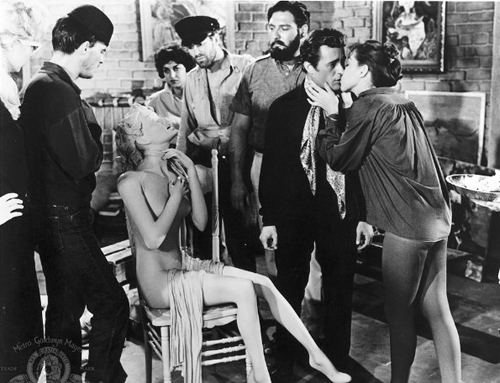A Bucket of Blood

Written and directed — in five days — at the apex of the Fifties (1954–1963), Roger Corman’s loopy, poorly lit, but inspired A Bucket of Blood satirizes two of the era’s key low-middlebrow cultural developments: beatnik culture and schlock horror.
I describe these otherwise dissimilar phenomena as “low-middlebrow” because both smooth the edges off the uncanny and the alienating: schlock horror gives us lowbrow folktales without the hysteria, while beatnik gives us anti-highbrow Beat-ness without the exaltation. Fans of Twilight or David Eggers, pay attention.
Not that I’m suggesting that Corman’s nobrow comedy-horror movie seeks to provide us with hysteria and exaltation. Far from it! Instead, via propaganda-film-esque blocking like that shown here, from a scene in which busboy-turned-murderous wunderkind sculptor Walter Paisley (Dick Miller) is anointed king of the scene, Corman reminds us (for the first time, though hardly the last) how pathetic it is that we’ve allowed ourselves to be persuaded to settle for anything less.

